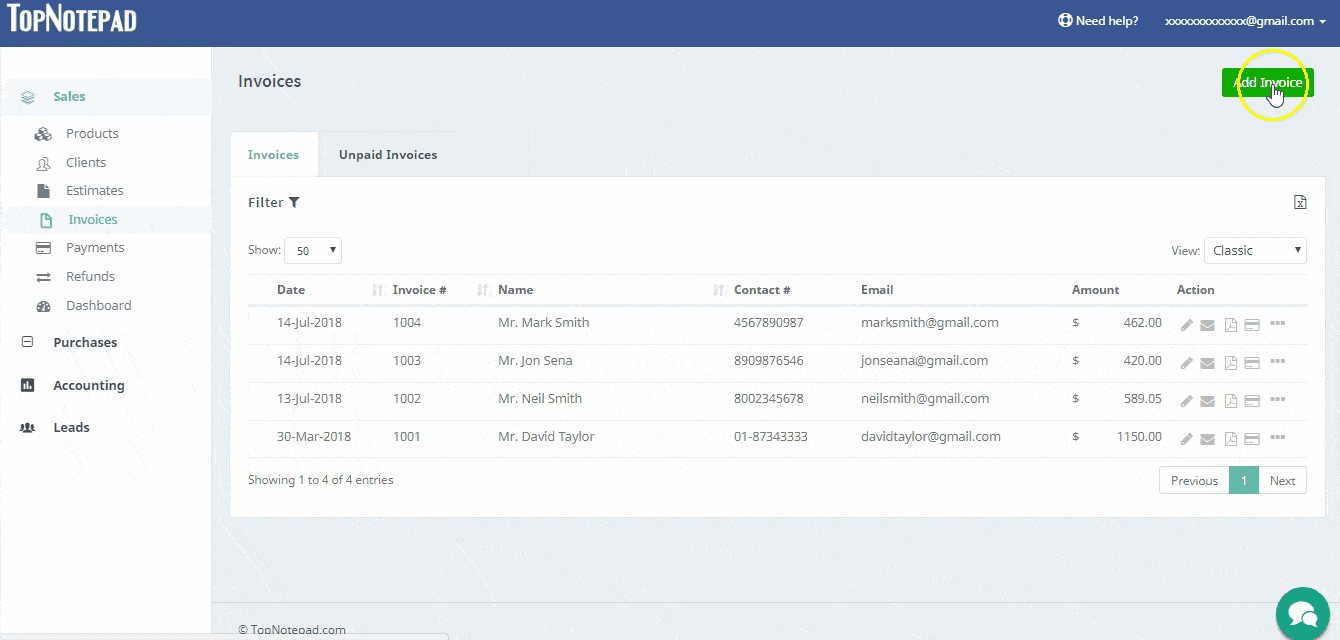Critical components of invoice
Use our template and cover all critical components for invoicing
In this article, we have tried to cover critical components of invoice. The objective is to create a check list of items that are required to create an invoice free of ambiguity.
Hopefully this will be of help to you. Read on!
Invoices are a critical component of every business. They serve as a bill of services, closure for projects, a legal paper trail, and an opportunity to strengthen the rapport between you and your customer.
Invoices that obfuscate information, incorrectly state terms or arrive incomplete can be a massive headache for all parties. These mistakes will only delay the payment process, so it is critical you produce invoices that clearly deliver information your client (or their accounts payable department) will need. Strategic timing and attractive presentation are also important, as they can help “soften the blow” by making your invoice seem less like a stale demand for money and more like a friendly letter.
Invoices have many small bits of important information. Here is the list ofcritical components of invoice. They should always contain the following:
1. The word “invoice.” Obvious enough, but don’t let the client mistake it for anything other than a bill that needs to be paid. Make it big and bold and put it at the top of the page.
2. Your Employer Identification Number (EIN) or Tax ID Number. This will be important come tax time, when the client starts putting together W-2s. Similar to the EIN, some clients may assign outside contractors a unique Vendor ID. This practice is usually found in larger companies. If you have been given one, be sure it appears conspicuously.
3. Names and addresses of both client and contractor. Make a clear distinction between the “to” party and the “from” party.
4. Date everything. Date the invoice (the day it goes out, not the day you write it) and list the dates of when items on the invoice were completed. In the terms, list the due date and penalty dates. If something ever goes to small claims court, the judge will look favorably on your scrupulous attention to detail.
5. A clear, itemized list of services rendered. Descriptions should be short and to the point, and all delivery dates indicated. Next to each item, list the hourly rate, hours worked and subtotal amount.
6. The total amount owed. On the bottom, labeled explicitly, bolded if needed.
7. The terms of the invoice. At the very least, this should include when the invoice is due; for instance, if you expect payment within thirty days (fairly standard), simply put “30 Days.” (You could also put “15 Days” or even “Immediate” if you don’t particularly like the client.)
Hopefully this will be of help to you. Read on!
Invoicing
Invoices are a critical component of every business. They serve as a bill of services, closure for projects, a legal paper trail, and an opportunity to strengthen the rapport between you and your customer.
Invoices that obfuscate information, incorrectly state terms or arrive incomplete can be a massive headache for all parties. These mistakes will only delay the payment process, so it is critical you produce invoices that clearly deliver information your client (or their accounts payable department) will need. Strategic timing and attractive presentation are also important, as they can help “soften the blow” by making your invoice seem less like a stale demand for money and more like a friendly letter.
Invoices have many small bits of important information. Here is the list ofcritical components of invoice. They should always contain the following:
1. The word “invoice.” Obvious enough, but don’t let the client mistake it for anything other than a bill that needs to be paid. Make it big and bold and put it at the top of the page.
2. Your Employer Identification Number (EIN) or Tax ID Number. This will be important come tax time, when the client starts putting together W-2s. Similar to the EIN, some clients may assign outside contractors a unique Vendor ID. This practice is usually found in larger companies. If you have been given one, be sure it appears conspicuously.
3. Names and addresses of both client and contractor. Make a clear distinction between the “to” party and the “from” party.
4. Date everything. Date the invoice (the day it goes out, not the day you write it) and list the dates of when items on the invoice were completed. In the terms, list the due date and penalty dates. If something ever goes to small claims court, the judge will look favorably on your scrupulous attention to detail.
5. A clear, itemized list of services rendered. Descriptions should be short and to the point, and all delivery dates indicated. Next to each item, list the hourly rate, hours worked and subtotal amount.
6. The total amount owed. On the bottom, labeled explicitly, bolded if needed.
7. The terms of the invoice. At the very least, this should include when the invoice is due; for instance, if you expect payment within thirty days (fairly standard), simply put “30 Days.” (You could also put “15 Days” or even “Immediate” if you don’t particularly like the client.)
